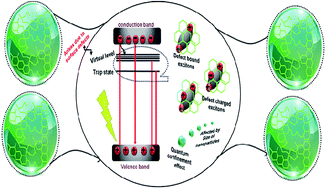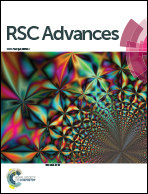Potential prospects for carbon dots as a fluorescence sensing probe for metal ions†
Abstract
The significance and importance of carbon-based NPs and their promising applications were a strong inspiration for this work. An inexpensive and easy synthesis of carbon quantum dots (CQDs) has been carried out by using easily-available biomass such as wheat (Triticum), rice (Oryza sativa), pearl millet (Pennisetum glaucum) and sorghum. The as-prepared particles have better-controlled stability and luminescence activities as CQDs without using any external template. The well-defined emission properties of CQDs further encouraged the investigation of their role for sensing chromium (Cr3+) ions in aqueous media. Compared to the response to other metal ions, the fluorescence emission (photoluminescence) of CQDs shows significant enhancement in the presence of Cr3+ ions, with a limit of detection of 6 × 10−7 to 13 × 10−7 M and a linear range of 20 μM. The practicality of use and the average recovery of Cr3+ ions in the presence of different CQDs were also tested in water from different sources, such as tap water, buffer, distilled water and sewage water. The present route offers a simple, rapid, cost-effective and non-toxic means to determine metal ion impurities with improved selectivity and sensitivity.


 Please wait while we load your content...
Please wait while we load your content...